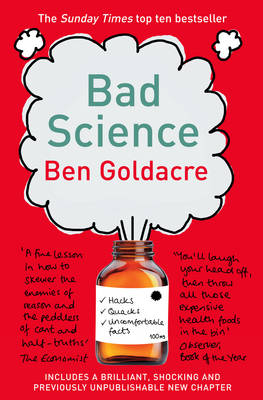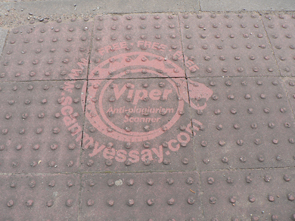
Harper Perennial edition (2009)
If you have not yet read Ben Goldacre’s book Bad Science, then I thoroughly recommend that you do. As readers of his regular Guardian column or his website will already know, Goldacre has embarked on a campaign to root out example of pseudoscience and shoddy science whereever they may be found.
All the usual villians are present – homeopaths, nutritionists, slack journalists, pharmaceutical companies and AIDS dissenters. Some are mentioned by name, but given their alleged predilection for litigation, and since I do not have the time, the money or the inclination to do battle with them in the courts, I shall not repeat their identities here!
It would be wrong, however, to give the impression that Goldacre is merely on a crusade against high profile exponents of “bad science”. True, the author does sometimes betray a little too much glee as he places a bomb under the throne of a media “health expert” (in a way that I found disturbingly reminiscent of the Physiology lecturer, when I was a first year undergraduate, recalling his boyhood experiments on frogs). Nevertheless, Goldacre is keen to emphasise that his purpose is to “teach good science by examining the bad” (p165 in my copy), adding that “the aim of this book is that you should be future-proofed against new variants of bullshit” (p87). Continue reading →
September 11, 2009
Categories: book review, critical thinking, education, information literacy, research ethics, science, teaching . Tags: Bad Science, Ben Goldacre, blinding, Guardian, Hawthorne effect, homeopathy, how science works, nutritionists, randomisation, statistics, study skills, systematic review, trial design . Author: Chris Willmott . Comments: 3 Comments

 Recognising that neuroscience is an area of research that fascinates the public and where discoveries are frequently picked up by the general press, Weisberg et al generated four explanatory statements for each of 18 different psychological phenoma. In each case the four statements represented:
Recognising that neuroscience is an area of research that fascinates the public and where discoveries are frequently picked up by the general press, Weisberg et al generated four explanatory statements for each of 18 different psychological phenoma. In each case the four statements represented: A tweet this morning from @
A tweet this morning from @






